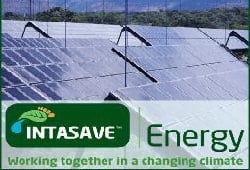INTASAVE Energy, the not-for-profit and environmental enterprise, has successfully reached its $100,000 crowdfunding target that will see the installation of the first Solar Nano Grids (SONGs) in the villages of Lemolo B and Echareria in Kenya, each of which will service the needs of at least 250 people. This is the first major milestone for the project that aims to reach over 500 communities across Kenya, South Africa, and Mozambique within three years, as part of its vision for every person on the planet to have access to clean, reliable, and affordable power.
Having passed the $100,000 target the deadline for the crowdfunding will be extended to January 1 to allow for further contributions to be made through its crowdfunding campaign on Indiegogo.
SONGs reduce greenhouse gas emissions by eliminating the use of kerosene for lighting and diesel for power generation. School children doing their homework will face less health risks to eyes and lungs as solar power removes the need for kerosene lamps in the home. SONGs also open up micro-enterprise opportunities that will help rural communities become self-sustaining, by providing power for small-scale industrial activity such as milling corn, incubating chickens for breeding, battery charging, refrigeration, copper welding and businesses like hair salons and internet hubs.
“The more funding we can raise at this stage, the more solar nano grids we can roll out to communities in Africa. Anyone can contribute from as little as $10 to help families in off-grid communities not only with household electricity, but to be able to mill corn, incubate chickens, run water pumps and manage micro enterprises, in a clean and sustainable way using SONGs – electricity is essential for development,” said Arran de Moubray, Head of Renewable Energy, INTASAVE-CARIBSAVE Group, adding “Kenya was chosen as an ideal starting point in Africa because 30 million people (75% of the population) in Kenya are without electricity, 95% of whom are located in off-grid rural areas, which are simply not viable for larger solar installations.”

